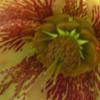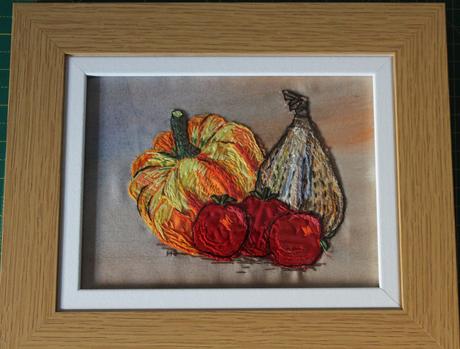
I made a reference back at Christmas to an embroidery design course that I have been undertaking. Today, with snow stopping gardening and nothing horticultural to blog about I thought I would share some more of my other passion in life – embroidery and textile arts.
This slideshow requires JavaScript.
The course I completed at the end of last year was Level 1 Hand Embroidery – Moving On which is run by the Embroiderers’ Guild. It is a distance learning course and has been such an eye opener to me. Each unit has two parts: design and embroidery stitches. The design units perplexed me to start with as I spent most of my time splashing black paint around, curling paper, weaving paper, collecting inspirational images from nature etc. After a while pennies starting to drop and the design elements are intended to help you learn about putting together an image to stitch.
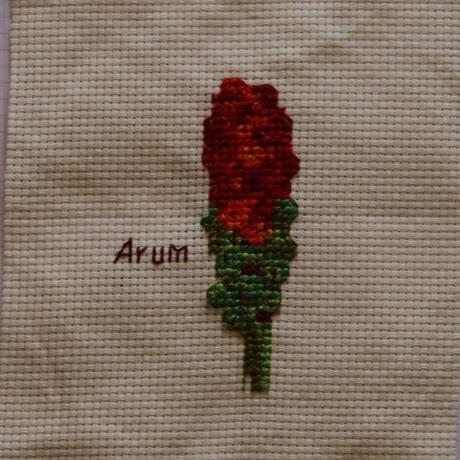
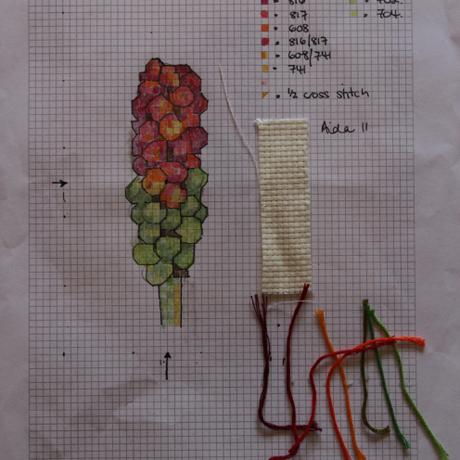
You learn about colours and how they work. Having read countless garden design books and having always drawn and painted I thought I was quite good at contrasts and harmonious colours but doing the exercises on the course really helped me develop a better understanding.
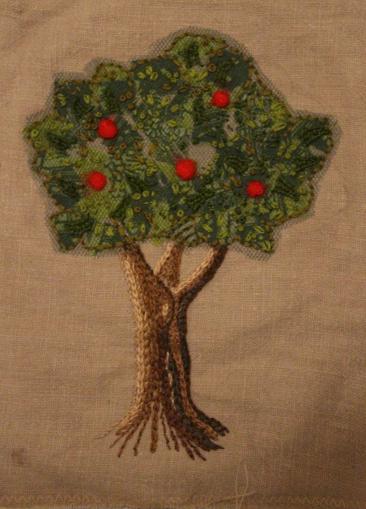
Having undertaken the design element of the unit you then move on to learning some new stitches or textile techniques. These often build on the design work in the first half of the unit so the paper folding and weaving translates into fabric manipulation as seen in the slideshow above. At the end of every two units you are required to undertake a piece of design work using the techniques you have learnt.
The Arum above was the design piece I created at the end of the cross-stitch section. This section also included a lot of work on colour, exploring contrasts and tone so I wanted to incorporate those into my design. The biggest lesson learnt was that trying to do berries in cross stitch is not the best idea. And it is exactly those sorts of insights that you have to capture in your evaluation of your work which you then photograph and email to your tutor.
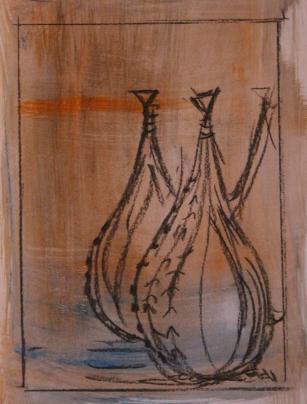
The tree above is another end of unit design piece which was quite a step forward for me. I used the fabric layering technique which I had learnt in the unit (see slideshow) and then stitched leaves and apples on top as well as a variety of stitches to create the trunk.
My final piece of design work was to create an image from scratch bringing together everything I had learnt. I had recently been to the Malvern Autumn show and I wanted to use some of the photographs from the vegetable show in my final piece. I went through several complicated drawings, exploring techniques and composition (as seen in the onion drawing). I finally set upon a simple composition which would allow me to use a variety of techniques.
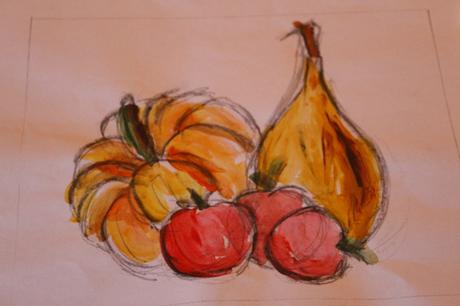
I painted the fabric which was simple curtain lining. I washed it with acrylic paints to give various tones which would complement the subject matter. The onion and squash were created using fabric layering with lots of appropriate coloured ribbons being built up and then covered with fine tulle. I then add stitches building up the layers. A similar approach was use for the tomatoes but with less stitching. I went through various changes to the design while I created the piece all of which I had to document for my course.
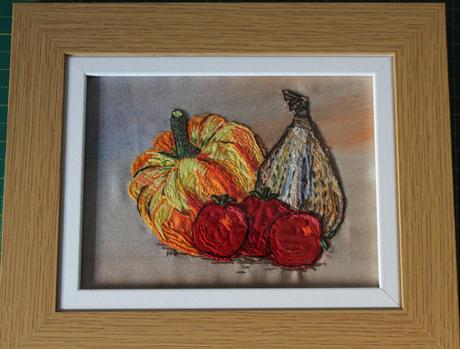
In my final evaluation I had to calculate the cost of producing the piece, explore alternative fabrics and approaches and how I might present the work.
I have to admit I am incredibly proud of the final piece having never done anything like this before and I had signed up for Level 2 before I got the result of Level 1 – A Distinction!! I’ve never done as well as this in anything in my life so I am over the moon.
Level 2 builds on what I learnt at Level 1 and already this year I have been printing on fabric and am about to do some stencilling once the paints arrive.
What I also love about this course is that I can incorporate my love of plants and wildlife into my work and what I have been learning about color is helping me develop the garden borders.
Advertisements &b; &b;